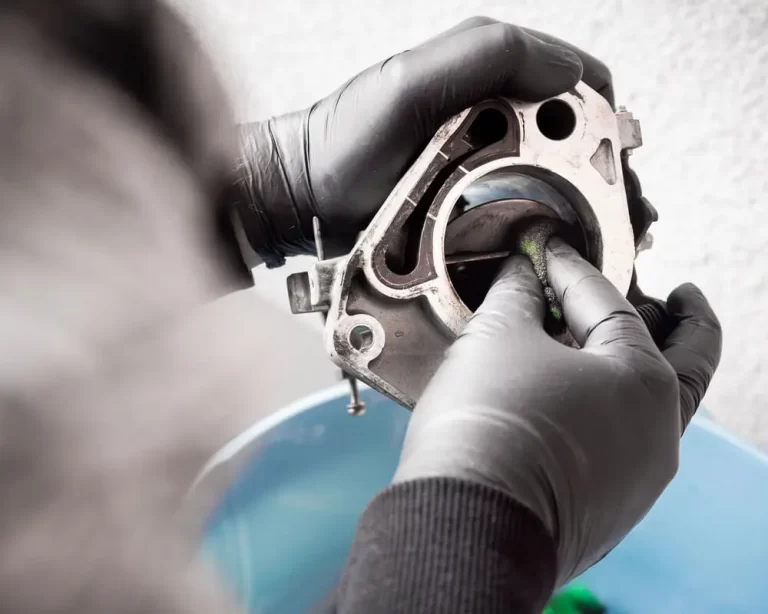Cleaning the throttle body is an important maintenance task, as the throttle body is important to the engine’s performance. If you do not clean the throttle body, your vehicle will have terrible fuel economy and stall when slowing down.
Does cleaning the throttle body make a difference?
A clean throttle body is not a common concern for most vehicle owners. They are far more worried about tractionless tires, getting into an accident with an uninsured driver, oil changes, malfunctioning brakes, and looking for a golden gas station with the cheapest gas.
But when there is an issue with the throttle body, it is an issue that should not be ignored or disregarded. A poorly performing throttle body can affect the entire vehicle.
The throttle body is important to the performance of the entire engine because it is the part of the engine that controls the amount of air that goes into the combustion chamber.
If a poorly performing throttle body does not provide enough air into the engine, the vehicle will not perform as it should.
On the other hand, if a malfunctioning throttle body allows too much air into the engine, the combustion chamber will require an equal amount of gasoline. The more air in the combustion chamber, the more gasoline must be used.
How will I know when it is time to clean my vehicle’s throttle body?
There are two main ways to know when it is time to clean your vehicle’s throttle body. The first way is based on the number of miles.
Most vehicle manufacturers and automotive specialists recommend that the owner of a vehicle should clean their vehicle’s throttle body between 60,000 and 80,000 miles.
The second way to know if it is time to clean a vehicle’s throttle body is through the signs of a malfunctioning throttle body.
When the throttle body is dirty and covered with grime, it will not work as it is supposed to and the vehicle’s performance will drop significantly.
All vehicles have to get their throttle bodies cleaned every 60,000 to 80,000 miles. This is the general rule that vehicle maintenance personnel and vehicle manufacturers will recommend.
If you have an older vehicle, one that is from the 1980s and older, or a luxury vehicle, the recommended mileage may change.
To find out the specific number for your vehicle, you can check the manual that came with the vehicle, or you can email the manufacturer for their recommended cleaning time.
How does the throttle body become dirty?
Remember, the main function of the throttle body is to regulate how much air goes into the combustion chamber. The faster you drive; the more air and gasoline are needed in the combustion chamber.
Also, vehicles that have powerful engines, like V8 engines, will need more air and gasoline than their V6 and V4 counterparts.
Gasoline vapors in the engine escape the combustion chamber, as they are supposed to. Some of the vapors will eventually make their way into the throttle body. The vapors will coat the throttle body and leave a black deposit.
Dirt and small particles will also find their way into the throttle body because the vehicle pulls air from the outside of the car.
If you live somewhere where there are a lot of sandstorms, dust, and dirt flying in the air, you may need to get your engine clean more often than someone who does not live in that environment.
What should I clean my vehicle’s throttle body with?
There are several substances that you can use to clean a vehicle’s throttle body. The next time you go to an automotive specialty store, ask a knowledgeable person who works at the store about throttle body cleaner.
While all of the throttle body cleaners on this list can be used on any vehicle, maybe your vehicle has a preferred cleaning chemical.
With most of the types of cleaners on this list, we have also included some products to help you narrow down the type of cleaner you need.
There are six different cleaners that can clean a throttle body
- Throttle body cleaners – CRC Throttle Body & Air Intake Cleaner 05678 – 5 WT OZ, Cleaner for All Fuel Injected Gasoline Engines
- Air intake valve cleaners – Intake Cleaner, Aerosol Can, 12 oz, Flammable, Non-Chlorinated
- General-purpose oil designed for cars
- Carburetor cleaner – Berryman Products 0117 B-12 Chemtool Carburetor, Choke and Throttle Body Cleaner
- Non chlorinated brake cleaner – CRC Brakleen Non-Chlorinated Brake Part Cleaner 50 State Formula, 14oz
If you need to clean your vehicle’s throttle body and you have none of these cleaners listed above, then do not try and look around for other substances.
The throttle body is not a delicate piece of metal, but it does deal with air and the combustion chamber.
So, if the wrong chemical is used to clean the throttle body, the chemical can mix with the air and wreak havoc in the combustion chamber.
A note about non-chlorinated brake cleaners
If all you have is a non-chlorinated brake cleaner to clean your throttle body, then you can use it. However, non-chlorinated brake cleaner should only be used as a last resort.
Try to use anything else other than non-chlorinated brake cleaner. You should use it only as a last resort because the wrong brake cleaner can ruin the sensors and the rubber parts around the throttle body.
When you are done using the brake cleaner, wipe down the throttle body as much as you can and try to get all of the substance off. And, if you do not have non-chlorinated brake cleaner, then don’t use anything else.
Don’t use a regular brake cleaner on your throttle body. The chemicals in regular brake cleaners will come bust inside of the throttle body and decimate your engine.
Conclusion
When the throttle body is dirty, cleaning it can impact your entire vehicle. A clean throttle body will improve the fuel economy of your car, allow for smooth acceleration, and prevent the vehicle from stalling when the vehicle is slowing to a stop. Gasoline Vapors, along with the dirt and grime, can get stuck in the throttle body and causes deposits to build up.



